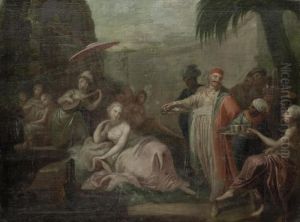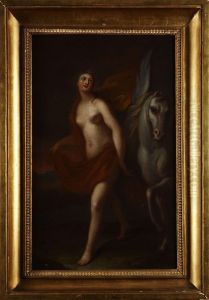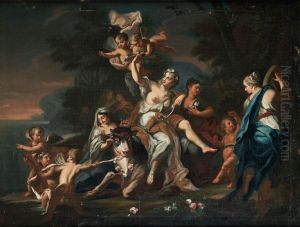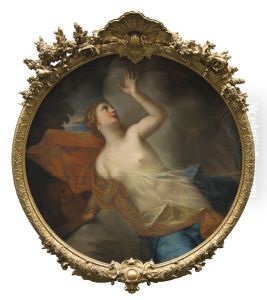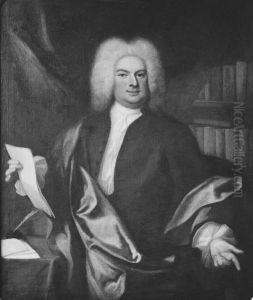Georg Engelhard Schroder Paintings
Georg Engelhard Schröder was a prominent Swedish painter and portraitist in the 18th century, known for his significant contribution to the Swedish art scene. Born on May 30, 1684, in Stockholm, Sweden, Schröder's artistic journey began under the guidance of his father, who was a painter himself. This early exposure to the arts paved the way for Schröder's lifelong passion and career in painting.
Initially, Schröder's artistic education took place in his homeland, but his quest for mastery in painting led him across Europe. He spent a significant part of his early career studying and working in Paris and Rome, where he was deeply influenced by the works of the Baroque masters. These experiences were crucial in shaping his artistic style, characterized by vivid realism, meticulous attention to detail, and a keen sense of light and shadow.
Upon returning to Sweden, Schröder quickly established himself as a leading portraitist, receiving commissions from the Swedish royal family and the aristocracy. His portraits are celebrated for their elegance, capturing the likeness and personality of his subjects with remarkable skill. Beyond portraiture, Schröder also engaged in creating religious and mythological paintings, showcasing his versatility as an artist.
Schröder's contribution to Swedish art was not limited to his creations. In 1735, he was appointed as the court painter to King Frederick I of Sweden, a position that not only recognized his talent but also allowed him to influence the artistic tastes of the Swedish elite. Furthermore, Schröder played a crucial role in the establishment of the Royal Swedish Academy of Arts in 1735, contributing to the development of future generations of Swedish artists.
Georg Engelhard Schröder's legacy is preserved in the collections of major museums in Sweden, including the Nationalmuseum in Stockholm, where his masterpieces continue to inspire admiration for their beauty and technical excellence. He passed away on February 17, 1750, in Stockholm, but his influence on Swedish art and portraiture endures, marking him as one of the most important artists of his time.


